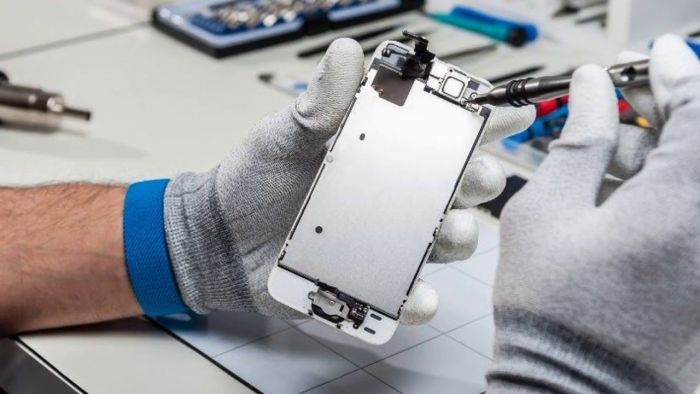Have you ever wondered how something as small as repairing cell phones can become a fully functional profitable business?
It obviously comes at a cost, and a lot of work also goes into inventory management, billing, and creating a favorable experience for the customers. You need more than just repair expertise and market insights, because today’s customers expect more than just fixes for their broken phones. Here, only the businesses that embrace these technology benefits will have a clear advantage over rivals, therefore guaranteeing long-term success.
The Competitive Cell Phone Repair Industry Landscape
The growing reliance on smartphones has driven fast expansion in the cell phone repair business. Millions of gadgets being used mean that repair services are still in great demand. But competitiveness has also gotten more fierce. Customers' attention is sought for by independent repair shops, franchise chains, manufacturer-authorized service centers. Success in this setting calls for operational efficiency, which can only be achieved by incorporating repair shop management software.
Many repair companies battle ineffective processes, imprecise inventory control, and bad customer correspondence. Delays, lost money, and unhappy consumers follow from these problems. Repair shops need to use technology to overcome these obstacles in order to increase efficiency, save expenses, and raise the caliber of their services.

Using Technology for Economic Development
Improving repair shop operations mostly depends on embracing technology. Many companies still depend on antiquated systems including spreadsheets, handwritten invoicing, and hand-written records. Human mistake, inefficiency, and data loss abound in these systems. Modern repair companies have to start using digital solutions if they want to maximize processes and increase profitability.
Repair Shop Software's Part in Profitability
Good repair shop software changes the way a company runs. It automates tedious work, centralizes activities, and offers insightful analysis of corporate performance. Integration of repair shop software helps companies lower operating inefficiencies, cut mistakes, and raise general service quality. Higher client happiness, recurring business, and more profits follow from these advances.
Optimizing Daily Activities
The bottom line of a repair shop is strongly influenced by daily operational efficiency. Many companies squander time on labor-intensive manual procedures, which causes delays and congestion. By streamlining daily activities, repair shop software lets workers concentrate on fixes rather than documentation.
Faster job tracking and check-ins
Handwritten intake forms are eliminated by a digital check-in system. Quickly entering their information helps customers cut waiting times. Repair shop software assigns a job ticket to a device after it is checked in, therefore tracking development in real-time. Access to the repair status by front-desk employees and technicians removes uncertainty and delays.
Consolidated Payment Processing
Faster transactions and less mistakes are guaranteed by flawless payment processing. Repair shop management software lets consumers pay with credit cards, mobile wallets, web portals, or several payment options. Further improving efficiency are automated invoicing and receipt production, therefore saving the need for hand-generated documentation.
Streamlining Inventory Control
A repair company's success depends critically on inventory control. Understocking, overstocking, and lost sales opportunities follow from inadequate tracking. Conventional systems of inventory control are prone to mistakes and ineffective. By means of real-time stock updates, automated low-stock warnings, and supplier connectivity, repair shop software maximizes inventory control.
Repair shop software lets companies real-time monitor inventory levels. This helps to avoid circumstances whereby technicians find a missing component only upon beginning a repair. Maintaining current inventory helps to decrease pointless delays and increase service efficiency.
Automated Ordering for Parts
Time-consuming and frequently results in procurement mistakes is manual parts sourcing. By means of supplier integration, repair shop software automates ordering. The system generates orders automatically when stock levels approach a certain level. This guarantees always availability of necessary components free from overstocking.
Handyman management of warranties can be difficult. Tracking warranties and repair histories, repair shop software guarantees that consumers obtain correct information on coverage and past repairs. This openness enhances consumer experience and fosters confidence.
Self-service portals and online booking
Online booking of repairs appeals to consumers for its convenience. Self-service portals let users make payments, schedule visits, and check repair statuses without going to the shop. While improving customer convenience and happiness, this lessens foot traffic. A better repair shop lowers expenses and increases income. Businesses maximize profit margins by cutting hand-made mistakes, streamlining processes, and raising turnaround times.
Lower labor costs
Automation reduces the necessity of too much hand work. Businesses lower administrative overhead by automating jobs such job assignment, billing, and inventory monitoring so freeing staff members to concentrate on repairs.
In Essence
Higher profits in a contemporary cell phone repair company call for efficiency, automation, and first-rate client service. Using technology—especially repair shop software—helps to improve customer experience, expedite processes, and maximize inventory control. Investing in the correct equipment will help repair companies maximize earnings, keep ahead of the competition, and guarantee long-term success in a fast changing sector.
Post Comment
Be the first to post comment!


